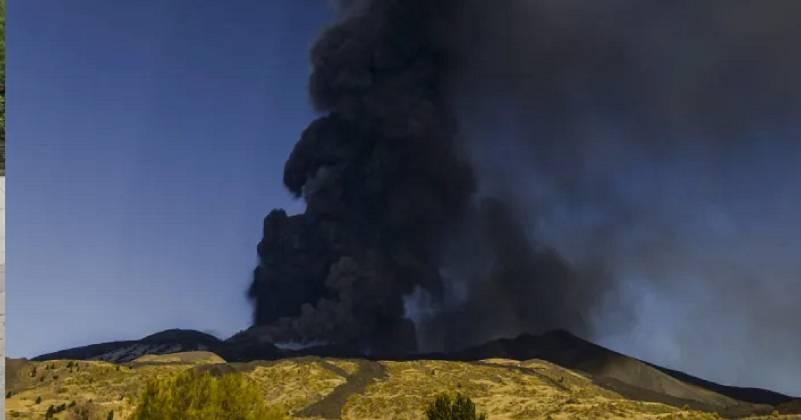
After a few months of relative quietness, Mount Etna erupted in a voluptuous manner sending spumes of smoke and ash to a 12 km distance and altitude.
According to Italy’s National Institute of Geophysics and Vulcanology, the lava flow from Etna, one of Europe’s most active volcanoes, was localised around the crater on the mountain’s southeast slope.
On the inhabited communities ringing the volcano’s slopes, which are popular with hikers, skiers, and other tourists, there were no early reports of injuries or property damage.
The lava flow from the crater had ceased by Monday afternoon, according to the institute. The institute had issued a warning for planes in the vicinity earlier in the day, when the volcanic cloud was emerging out of Etna.
The massive cloud, which could be seen for miles, was Etna’s latest astonishing display of power this month. A particularly violent eruption earlier this month sent bolts of lightning soaring across the sky over eastern Sicily.
Throughout its history, Etna has produced a number of known eruptions. In 1669, lava buried a swath of Catania, Sicily’s main city in the east, and destroyed dozens of villages in what is considered the volcano’s worst-known eruption.
In 1983, dynamite was used to redirect lava that was threatening settlements. The army created an earthen wall in 1992 to keep the lava streaming for months from Etna from barreling into one of the towns on the slopes.

Post Your Comments